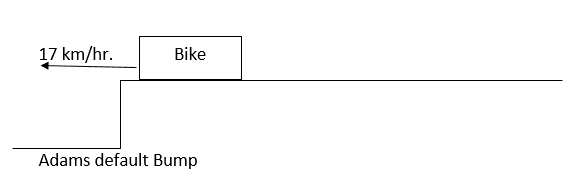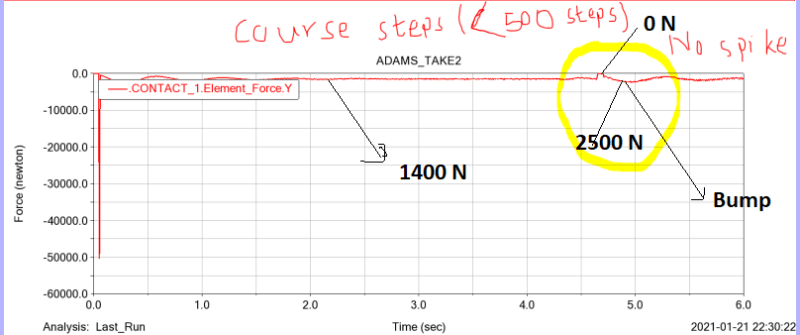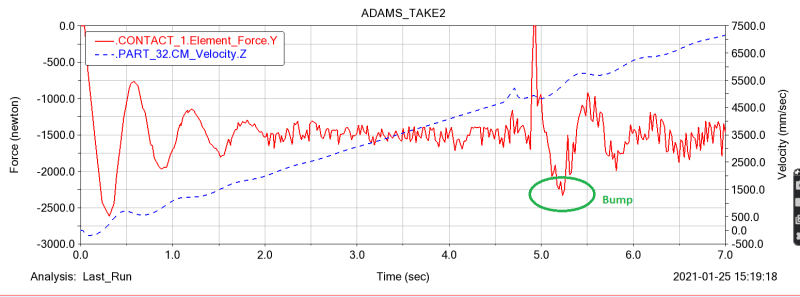Hi,
My two wheeler Adams model is subjected to run through the bump of height 10 cm approx. And I am interested in the ground reaction on the rear wheel at the bump when it moves with a velocity 25 km/hr. So I have plotted the ground reaction force on the wheel for a 6-second time span. I have made two graphs with different steps ( 400 steps and 600 steps ). I am pretty confused about which curve should I really trust. The curve of finner steps ( greater than 500) have spikes that show 25 KN ground reaction at the bump while in course one (less than 500 steps), it is smoother than the graph of finner steps ( no spikes at bump ) but of course, It has the effect of bump that shows 2500 N ground reaction force on rear wheel. The ground reaction at rear wheel is 1400 N at rest condition. Any logical suggestion might be helpful for me.
Thanks in advance
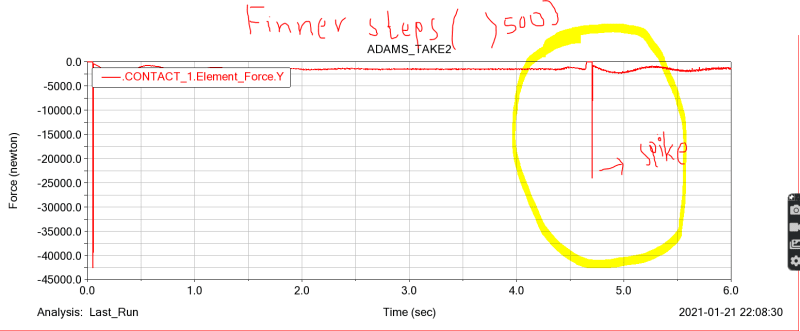
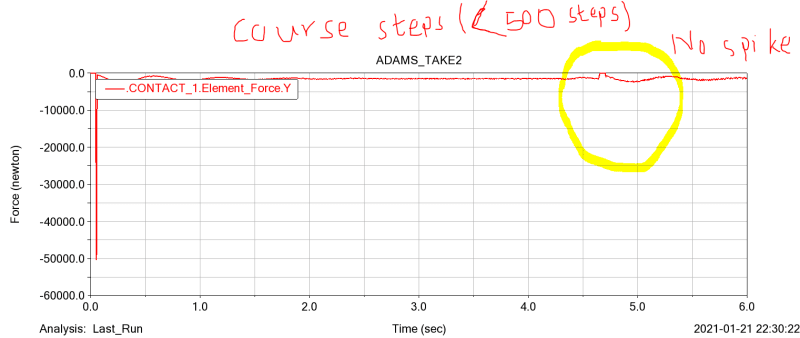
My two wheeler Adams model is subjected to run through the bump of height 10 cm approx. And I am interested in the ground reaction on the rear wheel at the bump when it moves with a velocity 25 km/hr. So I have plotted the ground reaction force on the wheel for a 6-second time span. I have made two graphs with different steps ( 400 steps and 600 steps ). I am pretty confused about which curve should I really trust. The curve of finner steps ( greater than 500) have spikes that show 25 KN ground reaction at the bump while in course one (less than 500 steps), it is smoother than the graph of finner steps ( no spikes at bump ) but of course, It has the effect of bump that shows 2500 N ground reaction force on rear wheel. The ground reaction at rear wheel is 1400 N at rest condition. Any logical suggestion might be helpful for me.
Thanks in advance



![[dazed] [dazed] [dazed]](/data/assets/smilies/dazed.gif)
